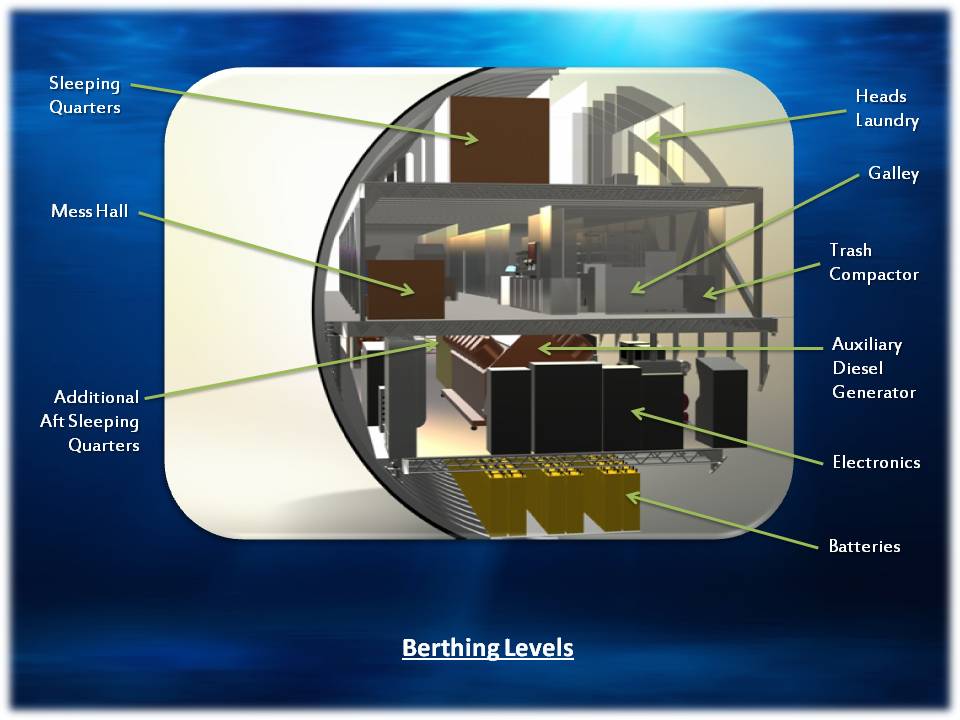

The bow covering the sonar sphere was made from steel or glass reinforced plastic (GRP), both varieties having been produced both booted and not booted. Torpedo tubes were located amidships to accommodate the bow-mounted sonar. The Sturgeon-class boats were equipped to carry the Harpoon missile, the Tomahawk cruise missile, the UUM-44 SUBROC, the Mark 67 SLMM and Mark 60 CAPTOR mines, and the MK-48 and ADCAP torpedoes.

USS Pargo (SSN-650) surfaced in Arctic ice. The class received mid-life upgrades in the 1980s, including the BQQ-5 sonar suite with a retractable towed array, Mk 117 torpedo fire control equipment, and other electronics upgrades. The extra space also helped facilitate the use of dry deck shelters first deployed in 1982. The last nine Sturgeons were lengthened 10 feet (3 m) to provide more space for electronic equipment and habitability. Because the S5W reactor was used (the same as in the Skipjacks and Thresher/Permits), the sail was enlarged (increasing drag), and the displacement was increased, the Sturgeons' top speed was 26 knots (48 km/h), 2 knots slower than the Thresher/Permits. The fairwater planes mounted on the sail could rotate 90 degrees, allowing the submarine to surface through thin ice. The biggest difference was the much larger sail, which permitted a second periscope and additional intelligence-gathering masts, and which reduced the risk of the submarine broaching the surface in heavy seas. The class was redesigned to SUBSAFE requirements concurrently with the construction of the first units, with seawater, main ballast, and other systems modified for improved safety. The extra length was in the operations compartment, including longer torpedo racks to accommodate additional Mark 37 torpedoes, the most advanced in service at the time of the class's design in the late 1950s. The five-compartment arrangement of the Permits was retained, including the bow compartment, operations compartment, reactor compartment, auxiliary machinery room no. The Sturgeons were essentially lengthened and improved variants of the Thresher/Permit class that directly preceded them. The boats were phased out in the 1990s and early 21st century, as their successors, the Los Angeles, followed by the Seawolf and Virginia-class boats, entered service. They were the "workhorses" of the Navy's attack submarine fleet throughout much of the Cold War. The Sturgeon class (known colloquially in naval circles as the 637 class) was a class of nuclear-powered fast attack submarines ( SSN) in service with the United States Navy from the 1960s until 2004. Mark 67 Submarine Launched Mobile Mines and Mark 60 CAPTOR mines instead of torpedoes.4 × 21 inch (533 mm) amidship torpedo tubes with up to 21 reload weapons including: Mark 48 and Mk-48 ADCAP torpedoes, typically 4 Harpoon missiles or up to 8 Tomahawk missiles, and 2-4 SUBROC anti-submarine missiles.By making smaller-scale design changes, the Navy will increase the length of time between maintenance stops and increase the number of deployments.37 (+1 modified variant for experimental research) Block IV submarines incorporate design changes focused on reduced total ownership cost. Montana is the third of the 10-ship group of Virginia-class submarines known as Block IV. Secretary of the Interior Sally Jewell, during a ceremony in September 2020. The submarine was christened by the ship’s sponsor, former U.S. More than 10,000 shipbuilders from Newport News Shipbuilding and Electric Boat have participated in Montana’s construction since the work began in May 2015.

We are proud of our team of shipbuilders for delivering these critical capabilities to the Navy and the nation.” “The results of the Navy’s board of inspection and survey during sea trials are a testament to our priorities of safety and quality. Navy in delivering the most advanced ships in the world to our warfighters,” said Jason Ward, Newport News Shipbuilding vice president of Virginia-class submarine construction. “We continue to be proud of our partnership with the U.S. Montana (SSN 794), which successfully completed sea trials last month, is the 10th Virginia-class submarine to be delivered by HII’s Newport News Shipbuilding division and the 21st built as part of the teaming agreement with General Dynamics’ Electric Boat. America’s largest shipbuilder Huntington Ingalls Industries (HII) on Friday delivered the newest Virginia-class fast-attack submarine to the U.S.


 0 kommentar(er)
0 kommentar(er)
